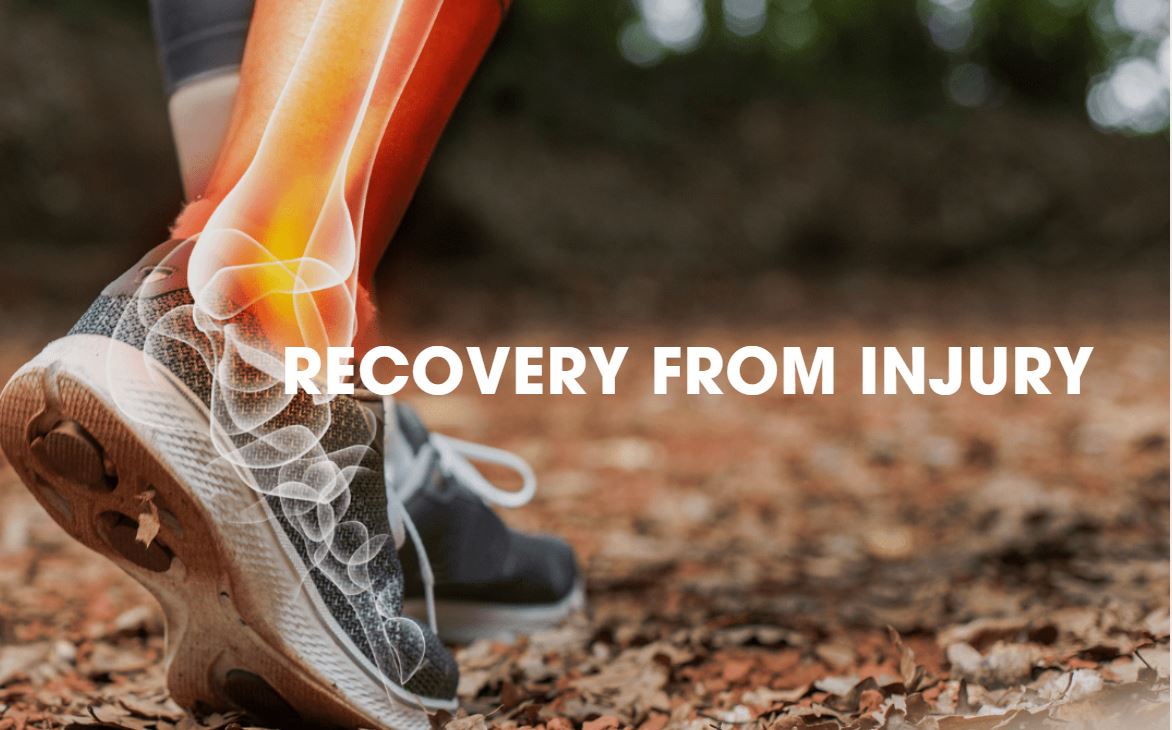Summer’s vibrant energy often translates to increased physical activity, whether it’s conquering a new hiking trail, joining a pick-up volleyball game, or chasing after the grandkids. Unfortunately, these adventures can sometimes lead to unwelcome guests: soft tissue injuries like muscle strains, sprains, and contusions. For decades, the traditional approach to treating these injuries involved the RICE (Rest, Ice, Compression, Elevation) protocol, later evolving to PRICE (adding Protection). However, a new philosophy called PEACE & LOVE is emerging, challenging the established methods and sparking a conversation about the body’s natural healing processes.
Delving into PEACE & LOVE
Developed by Canadian researchers in 2020, PEACE & LOVE offers a two-phase approach to managing soft tissue injuries. Let’s explore each phase in detail:
- PEACE (The Initial Response – First 1-3 Days):
- Protect: This remains a cornerstone of injury management. Depending on the severity of the injury, immobilization with a splint, brace, or sling might be necessary to prevent further damage. For less severe cases, restricting activities that could aggravate the injury is crucial.
- Educate: This represents a significant shift in the traditional approach. Healthcare professionals using PEACE & LOVE emphasize empowering patients to understand the natural healing process. This includes explaining the role of inflammation, a crucial but often misunderstood stage of recovery. Educational resources and guidance on self-care practices like proper sleep, nutrition, and gentle movement can also be provided.
- Avoid Anti-Inflammatories (Controversial): This is a point of contention within the medical community. Traditionally, ice packs and NSAIDs (nonsteroidal anti-inflammatory drugs) were used to reduce pain and inflammation. However, PEACE & LOVE suggests holding off on these initially. The rationale behind this is that inflammation, although uncomfortable, plays a vital role in clearing damaged tissue debris and initiating tissue repair. The body’s natural inflammatory response sends white blood cells to the injured area to fight off infection and initiate the healing cascade. Suppressing this process with NSAIDs might theoretically slow healing.
- Compress: Gently wrapping the injured area with an elastic bandage provides support and minimizes swelling. Compression helps prevent fluid buildup at the injury site, reducing pain and discomfort. The key here is “gentle” – overly tight wrapping can restrict blood flow and hinder healing.
- Elevate: Keeping the injured limb raised above the heart promotes drainage of fluids and reduces swelling. This is particularly helpful for injuries in the lower extremities like sprained ankles or knee strains.
The Nuances of Inflammation
The concept of avoiding anti-inflammatories during the initial stages of injury has sparked significant debate. While some healthcare professionals believe it allows for a more natural and potentially faster healing process, others caution that the research on their impact is still evolving. It’s important to understand the different types of inflammation:
- Acute Inflammation: This is the body’s immediate response to injury. It’s characterized by redness, swelling, pain, and heat. While uncomfortable, it’s a critical phase where white blood cells and other healing factors are recruited to the injured area.
- Chronic Inflammation: This is a prolonged inflammatory state that can contribute to various health problems. It’s typically not associated with acute soft tissue injuries but can develop if the initial injury doesn’t heal properly.
The Case for NSAIDs: Pain Management and Individual Needs
While PEACE & LOVE emphasizes the potential drawbacks of NSAIDs during the initial stages, it’s important to acknowledge their benefits. NSAIDs can be effective pain relievers, and for some individuals, managing pain is crucial for participating in physical therapy and overall recovery. Pain can be a significant deterrent to movement, which is essential for healing. Additionally, some studies suggest that NSAIDs might be helpful in reducing muscle soreness after exercise, although the evidence for their effectiveness in soft tissue injuries is less clear.
The Second Phase: LOVE (Moving Towards Recovery – Days 3 Onwards)
Once the initial inflammatory phase subsides, PEACE & LOVE transitions to the LOVE phase, focusing on promoting healing and restoring function:
- Load: As pain subsides, gradually increase weight-bearing activities on the injured area to regain strength and stability. Start with gentle movements and gradually increase intensity and duration as tolerated. Physical therapists can help design a safe and effective loading program tailored to your specific injury. It’s crucial to listen to your body
Summery
Ice Out? NSAIDs on Notice? Debunking Myths About Summertime Ouchies
Summer’s a time for fun in the sun, but it can also lead to unwelcome guests: muscle strains, sprains, and other soft tissue injuries. For years, the go-to treatment has been the RICE protocol (Rest, Ice, Compression, Elevation). But a new challenger has entered the ring: PEACE & LOVE. This approach throws a curveball – it suggests ditching the ice and over-the-counter pain relievers (NSAIDs) in the early stages of injury.
PEACE & LOVE: A Radical Shift?
Here’s the lowdown on PEACE & LOVE:
- Avoids Suppressing Inflammation: This is the big departure from traditional methods. Inflammation, although uncomfortable, plays a vital role in healing. It’s the body’s natural cleaning crew, clearing debris and jumpstarting repairs. PEACE & LOVE proposes letting this process unfold.
- Focuses on Education: Instead of simply reaching for the ice pack, PEACE & LOVE emphasizes patient education. Understanding the body’s healing cascade empowers individuals to actively participate in their recovery.
But Wait, There’s a Twist!
Not everyone’s sold on PEACE & LOVE just yet. Here’s why:
- Lack of Robust Evidence: Some experts argue that the research on avoiding ice and NSAIDs in the initial stages is still evolving. While PEACE & LOVE might offer a more natural approach, the effectiveness of traditional methods shouldn’t be dismissed.
- Pain Management Matters: Severe pain can be a barrier to movement, which is crucial for recovery. NSAIDs can be powerful allies in managing pain, allowing individuals to participate in physical therapy and regain function.
So, What’s the Verdict?
It’s not a clear-cut case of PEACE & LOVE vs. the traditional approach. The best course of action depends on several factors:
- Severity of the Injury: For minor muscle strains or sprains, PEACE & LOVE might be a viable option. However, for severe injuries or persistent pain, consulting a healthcare professional is crucial.
- Individual Needs: Pain tolerance varies. If NSAIDs help you manage pain and participate in therapy, they might still be beneficial.
Remember: When in doubt, seek professional advice! A doctor or physical therapist can guide you towards the most effective recovery plan, incorporating elements of both approaches if needed.
Bonus Tip: Listen to your body! Pain is a signal, but not all pain is created equal. Sharp, persistent pain indicates something might be wrong. Dull aches and soreness might be manageable on your own, but if in doubt, err on the side of caution and get it checked out.




